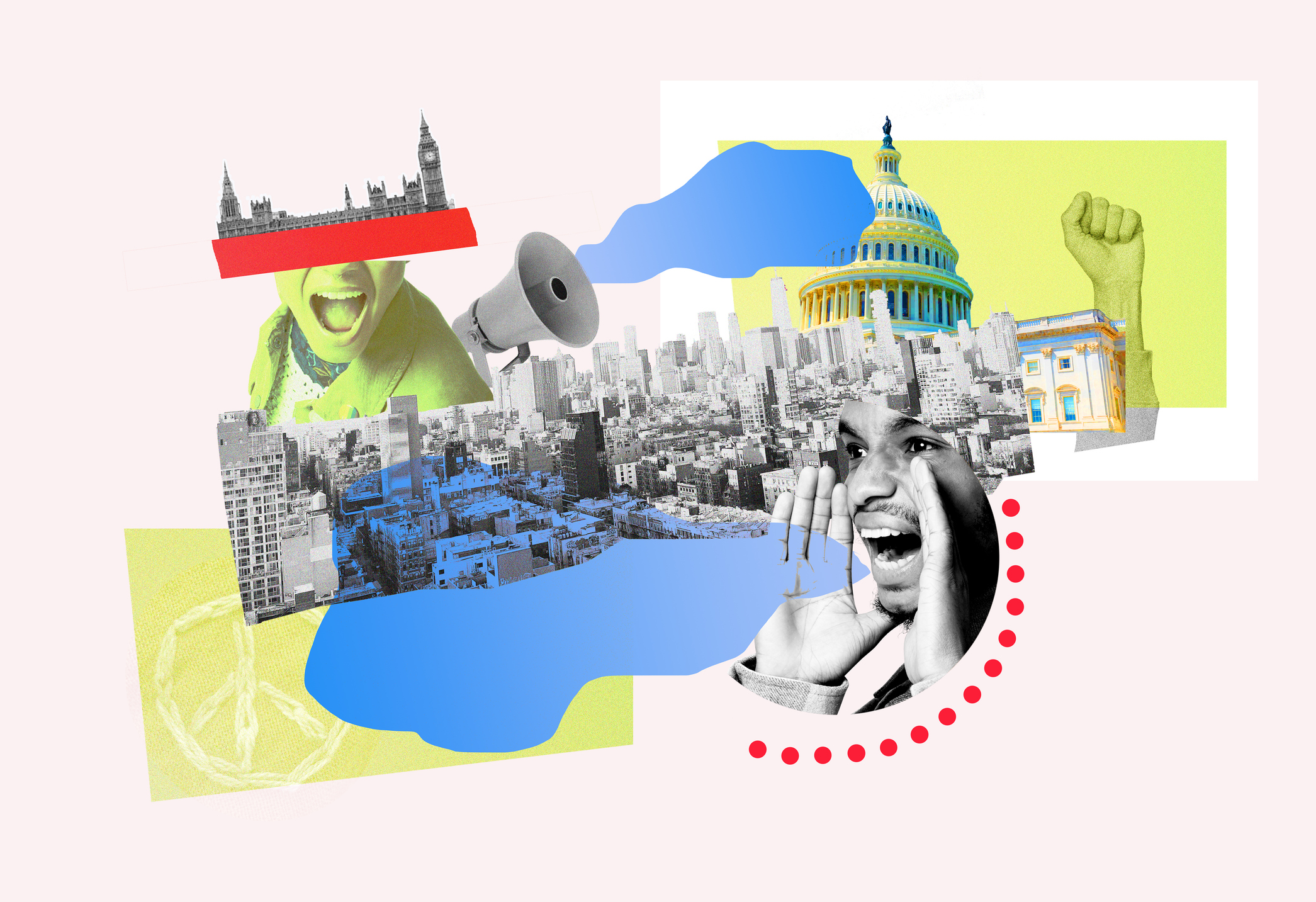We should have seen this coming!
The New Revolutionary Class

Younger generations must have avenues to rise.
No power on earth is more fearsome than a highly educated class that faces a constrained, even dismal, future. Such people have played a role in revolutionary upheavals in Europe, Russia, and Latin America—and could potentially do so here in the United States.
The key to radical agitation lies in what one Marxist scholar described as “the swelling population of college graduates caught in a vise of low-paying jobs.” Modern activism rarely stems from blue-collar workers. Instead, it mostly comes from the alienated-educated class, which emerged in its contemporary form with the Occupy Wall Street movement.
The key lies in the disjunction between those who consider themselves enlightened and fit to lead, as defined by tests and degrees, and the less-educated classes that work hard, innovate, and take risks. The educated class has expanded globally as college enrollment has exploded—which grew almost 80% between 1970 and 2010—even as job opportunities for many of that class have declined.
The New Angry Class
What has been referred to as “the educated underclass” can be seen not only in America but in Canada, in almost all European countries, and, most particularly, in China. Once seen as a land of future possibilities, the Middle Kingdom now suffers from a looming property, demographic, and overall economic crisis, with young educated people, as opposed to skilled blue-collar workers in particular, left with distressingly few opportunities.
Given this trajectory in virtually every high-income country, Pew has found that the vast majority of parents—80% in Japan and over 70% in the U.S.—are pessimistic about the financial future of their offspring. It’s no surprise then that less than 10% of Americans under 30 think the country is headed in a good direction.
This generation has a reason to be upset. Collectively, the older generation has left them an almost unfathomable $91 trillion debt load. In many countries, including the U.S., Australia, Canada, and the U.K., homeownership rates among the young are far lower than in the past. In contrast, in the U.S. a fifth of Boomers own half of the $32 trillion in home equity. In Britain, one in four Boomers is a millionaire, mainly due to inflated housing prices. British retirees have more income than working-age people, notes a recent Resolution Foundation survey.
To make matters worse, Millennials face a world where many good jobs are disappearing while they have to cope with high rents and exorbitant tuitions. In the U.S., some 40% of recent graduates are underemployed, working in jobs where their college credentials are essentially worthless. In the U.K., roughly a third doubt they will reach their career goals. Close to half of American adults under 30 still live with their parents. Across Europe and the U.K., large proportions of young workers are neither in work nor school.
Perhaps most frustrating, college educations, once seen as the ticket to a middle-class life, are increasingly considered a waste of money, with more young adults instead seeking careers in the trades.
Artificial intelligence is likely to accelerate this trend, at least in the short run. Eighty-two percent of Millennials fear AI will reduce their compensation; according to McKinsey, at least 12 million Americans will be forced to find new work by 2030. Big tech executives like Reid Hoffman—a key backer of Kamala Harris—promise that AI will serve the cause of “elevating humanity,” reflecting a “techno-optimist” ideology. Yet the impact on jobs for most people may not be so utopian. Some projections have AI wiping out potentially hundreds of millions of jobs worldwide.
Even the “geeks” are proving extremely vulnerable to what economists refer to as “skills-based technological change.” Tech firms like Salesforce, Meta, Amazon, and Lyft have announced major cutbacks in their white-collar workforce, and have warned that these positions are unlikely ever to return. IBM has put its staff hiring on hold while assessing how many of these mid-level jobs can be replaced by AI. In part to finance its drive to AI, Google recently laid off 12,000 workers, a number that is expected to grow to 30,000. The damage may be even greater at the grassroots level. Within months of AI’s emergence, freelance work in software declined markedly, along with pay.
The most politically disruptive development may derive from the loss of sizable numbers of skilled professionals, including those in finance. Even many “creative jobs”—actors, writers, and journalists—could be threatened as creative workers find their identities and creations copied or simply used in derivative products, particularly as AI builds its models on past work. Hollywood is already losing jobs. Recent Nobel Prize winner Geoffrey Hinton, an early AI developer and a former Google executive, suggests AI’s capacity to create convincing false images and texts is creating a world where people will “not be able to know what is true anymore.”
The Feminist Vanguard
Much of the educated, radical vanguard consists of single women and non-binary men. In the U.S., a new Institute for Family Studies analysis of 2020 census data found that one in six women do not have children by the time they reach the end of their childbearing years, up from one in ten in 1990. Pew notes that since 1960, the percentage of single-person households in the United States has grown from 13% to 27% (2019). Single women now total some 43.5 million, already as large as key voting blocs such as African Americans (48 million), while vastly larger than groups like labor union members (14 million) and college students (18 million).
Many younger people inhabit a world marked by familial and gender confusion. Today over 28% of all young women, notes Gallup, identify as LGBTQ, more than twice the rate of Millennials, and almost three times that of young men. Over 5% of U.S. high school students struggle with gender identity according to the CDC. In Asian countries like South Korea and Japan, where the non-binary trend may be less acknowledged, men and women seem to be evolving into having incompatible ways of life.
One factor is that women now predominate on college campuses, the main incubator of far-left radicalism. Since the early 1970s the percentage of female college graduates has grown from a 13% deficit compared to men to a 15% advantage—a remarkable almost 30% turnaround. The percentage of full-time female professors has risen dramatically; at the full professor level, the percentage has grown by roughly one-third.
Greater opportunities for women are a good thing, but it also has provided a powerful forum for spreading a radical feminist agenda. According to the National Center for Education Statistics, the number of women’s and gender studies degrees in the U.S. has increased by more than 300% since 1990; in 2015, there were more than 2,000 such degrees conferred. There are widespread movements to establish women’s centers almost everywhere as men are abandoning college and university life in record numbers; in some cases straight men, particularly white men, are being castigated as toxic, aggressive, and born misogynists.
The increasingly radical stance among women—particularly gay women—in anti-Israel protests is particularly revealing. They are embracing groups like Hamas and Hezbollah that are ferociously anti-gay and seek to circumscribe women’s roles in society. A large, highly disproportionate segment of the anti-Israel activists, notes researcher Eitan Hersh, are LGBTQ people.
The Democratic Party Base
In political terms, the leftward shift among women confirms the assertion made nearly a decade ago by the venerable Democratic pollster Stan Greenberg that unmarried women have become a “crucial” constituency for maintaining the Democratic majority. In recent elections, single women have joined African Americans as one of the largest and most dependable voting blocs for Democrats. Due largely to the abortion issue, it was their support that enabled the party to avoid the red wave many Republicans were counting on in the 2022 midterms. While married women favored the GOP by 14%, CNN exit polls found that two-thirds (68%) of unmarried women voted for Democrats; married men (plus 20) and unmarried men (plus 7) both favored Republicans.
But it’s not just social issues like abortion that are driving this. Women, particularly the unmarried, tend to be employed heavily in helping professions like medical care and teaching, even as many traditional male jobs, particularly in manufacturing, construction, and transportation, have disappeared. Whereas high taxes and regulation pose problems in the general economy, women predominate in fields that benefit from more government spending.
Not being part of a family, they tend to look to the government for help, whether for rent subsidies or direct transfers. This is why the pitch of Democratic presidents—as reflected in Obama’s “Life of Julia” and Biden’s “Life of Linda”—is geared toward women who are not married, with the occasional child raising addressed by government transfers.
The attitudes of younger people, particularly women, have a disproportionate impact on our cultural and intellectual life. This affects the ideological shift within the mainstream media, where anything that dissents from the progressive party line evokes screams and tears from college-trained “activist journalists.”
Temporary Phenomena or Long-Run Trend?
The current unrest among students and young graduates seems fairly universal, at least in countries other than China and Iran, where dissent rarely emerges in public and faces severe consequences if it does. But discord is evident even there. In Iran, young people are becoming alienated from the regime, and, more importantly, in China, many educated Millennials, faced with diminishing prospects for the country’s increasingly beleaguered middle class, have abandoned striving in favor of “lying flat.”
Over time even repressive regimes eventually face the result of youthful anger, as occurred in Tsarist Russia, imperial China, Weimar Germany, the Middle East, and much of Latin America. Yet the political trajectory of the new revolutionary class is not all that certain.
In Europe as much as one-third to two-fifths of young people support parties often characterized as far-right. In the last French presidential election, Marine Le Pen gained almost 40% of the youth vote, while Italy’s rightist Prime Minister Giorgio Meloni ranked first among younger voters. As Andrew Stuttaford noted at National Review, among voters under 25, Germany’s far-right AfD party won more votes than the Greens, the supposed favorite of young people. In 2019, the Greens did seven times better than AfD among these young voters.
In the recent British elections, support for Labour actually decreased among younger voters, barely breaking two-fifths, while Reform quadrupled its share. Here in the U.S., the Harvard Youth Poll shows Trump running even with Harris among younger male voters, but being destroyed two to one among female voters. Angry women may be the foundation of the American Left, but young men could become the bulwark of a resurgent Right.
Whatever their orientation, the new angry generation is likely to upset the current political order. The only way to address this threat is to find ways to steer youthful energies away from extremist politics and toward a more pragmatic worldview. This would require making it more possible for the young to rise, buy houses, and start businesses. If those paths are all closed, as they increasingly are, the results won’t be pretty.
The American Mind presents a range of perspectives. Views are writers’ own and do not necessarily represent those of The Claremont Institute.
The American Mind is a publication of the Claremont Institute, a non-profit 501(c)(3) organization, dedicated to restoring the principles of the American Founding to their rightful, preeminent authority in our national life. Interested in supporting our work? Gifts to the Claremont Institute are tax-deductible.
Connecting the dots the experts won’t
America's young men face an acute crisis of masculinity.
Real liberation demands a rejection of the commodification of women.
Our nation’s priority should be fixing its men.
In defense of sex-segregated times and places.






